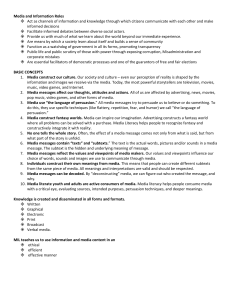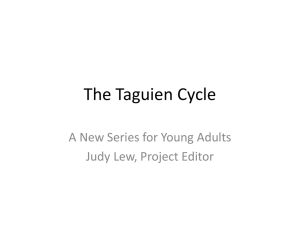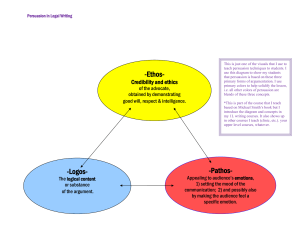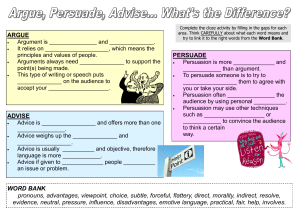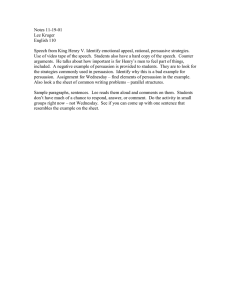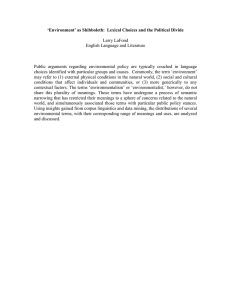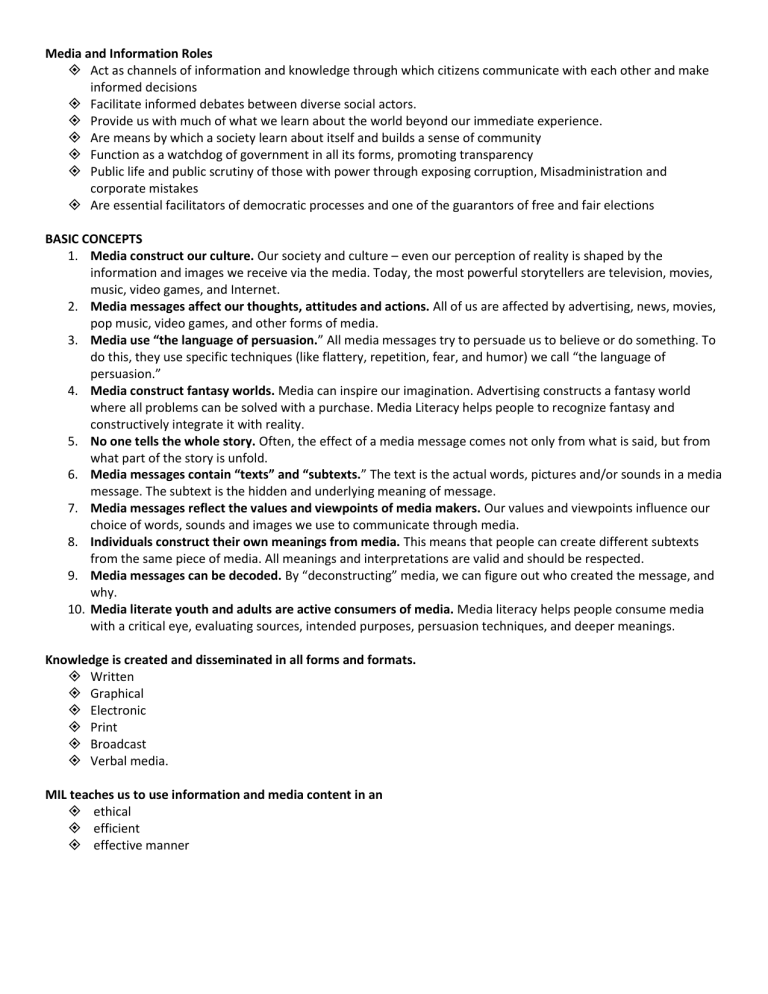
Media and Information Roles Act as channels of information and knowledge through which citizens communicate with each other and make informed decisions Facilitate informed debates between diverse social actors. Provide us with much of what we learn about the world beyond our immediate experience. Are means by which a society learn about itself and builds a sense of community Function as a watchdog of government in all its forms, promoting transparency Public life and public scrutiny of those with power through exposing corruption, Misadministration and corporate mistakes Are essential facilitators of democratic processes and one of the guarantors of free and fair elections BASIC CONCEPTS 1. Media construct our culture. Our society and culture – even our perception of reality is shaped by the information and images we receive via the media. Today, the most powerful storytellers are television, movies, music, video games, and Internet. 2. Media messages affect our thoughts, attitudes and actions. All of us are affected by advertising, news, movies, pop music, video games, and other forms of media. 3. Media use “the language of persuasion.” All media messages try to persuade us to believe or do something. To do this, they use specific techniques (like flattery, repetition, fear, and humor) we call “the language of persuasion.” 4. Media construct fantasy worlds. Media can inspire our imagination. Advertising constructs a fantasy world where all problems can be solved with a purchase. Media Literacy helps people to recognize fantasy and constructively integrate it with reality. 5. No one tells the whole story. Often, the effect of a media message comes not only from what is said, but from what part of the story is unfold. 6. Media messages contain “texts” and “subtexts.” The text is the actual words, pictures and/or sounds in a media message. The subtext is the hidden and underlying meaning of message. 7. Media messages reflect the values and viewpoints of media makers. Our values and viewpoints influence our choice of words, sounds and images we use to communicate through media. 8. Individuals construct their own meanings from media. This means that people can create different subtexts from the same piece of media. All meanings and interpretations are valid and should be respected. 9. Media messages can be decoded. By “deconstructing” media, we can figure out who created the message, and why. 10. Media literate youth and adults are active consumers of media. Media literacy helps people consume media with a critical eye, evaluating sources, intended purposes, persuasion techniques, and deeper meanings. Knowledge is created and disseminated in all forms and formats. Written Graphical Electronic Print Broadcast Verbal media. MIL teaches us to use information and media content in an ethical efficient effective manner
